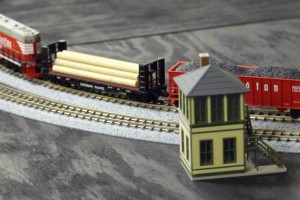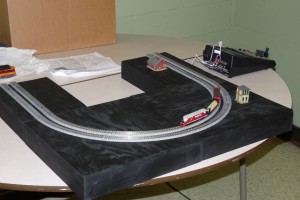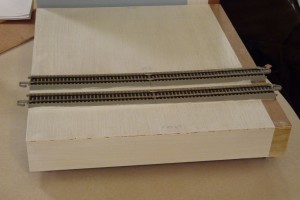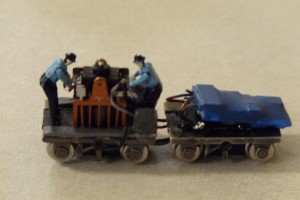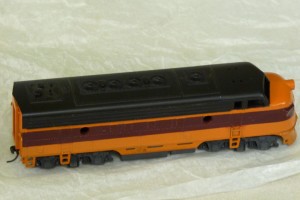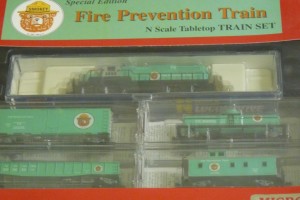By Jeff Moorman, Photos by Jeff Moorman
Introductions and announcements included a pitch from Bobj about the Rails Northwest (RAILSNW.COM) excursions on the Mt. Rainier Scenic Railroad on May 21.
Talk then centered on the T-TRAK module kits. Those that pre-ordered picked up their kits and then we were able to find good homes for a few more, but there are still a couple left waiting for adoption. Those available are 2 HO corners, 2 N corners, and 1 N straight, which I will bring to the May meeting. They are $9.25 for the straight and $16.60 for the corners regardless of scale.
Show and tell brought out some interesting stuff. Rob had a beautiful brass N scale ditcher from Overland. He also had an old NP timetable and operators rule book. Michael showed a book about Lionel what was originally purchased in the Lionel store in New York City. Dennis had some N gauge electric locomotives and passenger cars from a Peruvian prototype. Finally Chris has some HO cars, but my notes don’t indicate what they were. Sorry.
After the break we got out the scissors and crayons and created some T-TRAK module designs. Everyone got a couple of one-half size outlines of N-gauge T-TRAK modules. The goal was to design the scenery and color it in using the crayons. Suffice to say it had been a long, long time since any of the participants had been to kindergarten, and it showed. There were some close calls, but everything got cut out without any blood being shed.
Then we started assembling the module drawings into various layout configurations. A couple of things became evident:
- Even with crayon-colored paper modules, things looked better when there was preplanning with regard to scenic theme and railroad operation.
- Some operation seemed possible even with a few modules, provided there were spurs and runarounds available. Furthermore, that operation could be point-to-point, not just around an oval of track.
- Adding what the T-TRAK folks call a “junction module” made for some interesting additional possibilities.
Right now there are 3 things planned for the May meeting. First, Bobj has promised us a new DVD to preview. I think I heard it is about the Empire Builder. Second, we are going to do a sort of Operations 101 mini clinic. And third, we will start taking reservations for the June tour.
Remember the next meeting is May 5 and the one after that is June 2. The June date is for our annual tour, so attendance requires an advance reservation.
We meet at the Ronald United Methodist Church, 17839 Aurora Avenue North, Shoreline, WA. That is on the west side of Aurora (State Route 99) just north of 175th Street, between the Cadillac dealer and Deseret Industries. Note that there is still a lot of construction along this stretch of Aurora. Therefore, it might be best to be going southbound so you can make a right-hand turn into the church driveway immediately after passing the Deseret location.
Meetings are the first Thursday of each month, except July and August. Plus in June we usually do a tour. Enter the lower level of the church from the parking lot at the rear. Doors open around 7:00 PM, announcements at 7:15, and the program starts about 7:30. Hope to see you there or at least sometime on down the line.

